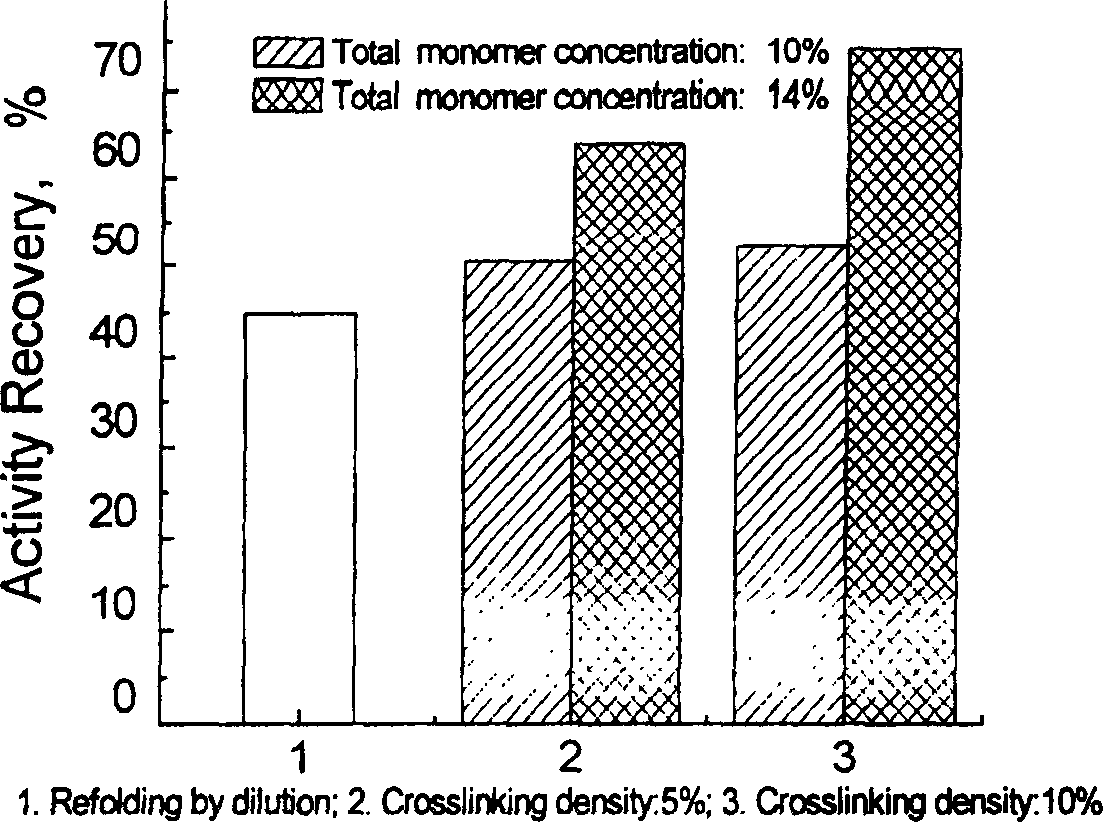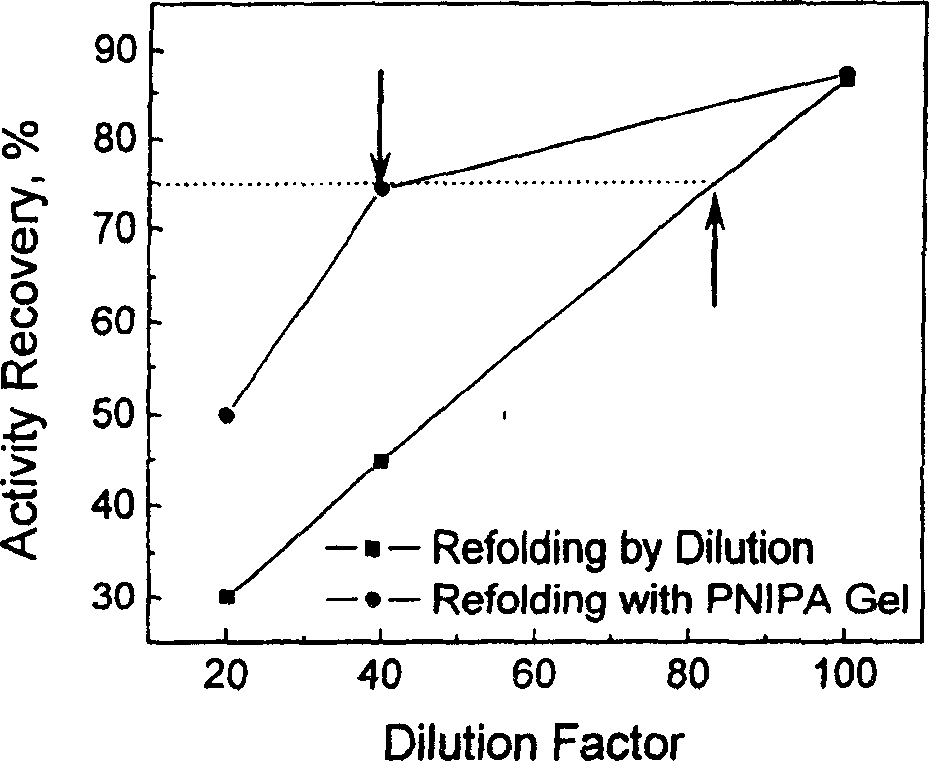Method for assisting lysozyme renaturation by temperature sensitive type poly N-isopropyl acrylamide gel
A technology of isopropylacrylamide gel and lysozyme renaturation, applied to biochemical equipment and methods, enzymes, fixed on/in organic carriers, etc., can solve problems such as protein loss and troublesome operation
- Summary
- Abstract
- Description
- Claims
- Application Information
AI Technical Summary
Problems solved by technology
Method used
Image
Examples
Embodiment 1
[0020] Embodiment 1: the preparation of thermosensitive type PNIPA gel (total monomer concentration 10%, cross-linking degree 5%)
[0021] The reaction was carried out in a 250mL three-necked bottle, and the stirring speed was adjusted to 420rpm by an electronic constant speed stirrer. The whole reactor is submerged in a super constant temperature tank, and the polymerization temperature is 25°C. Dissolve 75mg of surfactant Tween80 in 75mL of liquid paraffin in the continuous phase, add it to the reactor, and feed an appropriate flow rate of N 2 , stirred for about 20 minutes to mix the solution evenly, then slowly added the aqueous solution of the reactant with a total monomer concentration of 10% and a cross-linking degree of 5% into the reactor dropwise with a pipette gun, continued to stir for 30 minutes, and then slowly added 1 μL initiator TEMED 20 μL, polymerize for 3 hours and discharge. The final product is repeatedly soaked with different volume ratios of absolute ...
Embodiment 2
[0024] Embodiment 2: the preparation of granular PNIPA gel (total monomer concentration 14%, degree of cross-linking 10%)
[0025] The reaction was carried out in a 250mL three-necked bottle, and the stirring speed was adjusted to 420rpm by an electronic constant speed stirrer. The whole reactor is submerged in a super constant temperature tank, and the polymerization temperature is 25°C. Dissolve 75mg of surfactant Tween80 in the continuous phase, add to the reactor, and feed into the N of appropriate flow rate 2 , stirred for about 20 minutes to mix the solution evenly, and then slowly added the aqueous solution of the reactant with a total monomer concentration of 14% and a cross-linking degree of 10% into the reactor dropwise with a pipette gun, continued to stir for 30 minutes, and then slowly added 1 μL initiator TEMED, polymerized at 25°C for 3 hours and discharged. The final product is repeatedly soaked with different volume ratios of absolute ethanol / water solution,...
Embodiment 3
[0027] Embodiment 3: granular PNIPA gel assists lysozyme refolding (10% of the total monomer concentration of preparation gel, cross-linking degree 5%)
[0028] After adding 10mg / mL inactive lysozyme solution in the extended state to the refolding buffer (the dilution factor is 40), add 100mg / mL granular PNIPA gel to it, fully shake and disperse evenly, then shake at 30°C and 120rpm Refolding in bed for 3 hours, the results are as follows figure 1 shown. After renaturation, the activity recovery rate of lysozyme reached 50.34%, but under the same conditions, the recovery rate of activity was only 44.9%.
PUM
| Property | Measurement | Unit |
|---|---|---|
| particle size | aaaaa | aaaaa |
| diameter | aaaaa | aaaaa |
Abstract
Description
Claims
Application Information
 Login to View More
Login to View More - R&D
- Intellectual Property
- Life Sciences
- Materials
- Tech Scout
- Unparalleled Data Quality
- Higher Quality Content
- 60% Fewer Hallucinations
Browse by: Latest US Patents, China's latest patents, Technical Efficacy Thesaurus, Application Domain, Technology Topic, Popular Technical Reports.
© 2025 PatSnap. All rights reserved.Legal|Privacy policy|Modern Slavery Act Transparency Statement|Sitemap|About US| Contact US: help@patsnap.com


